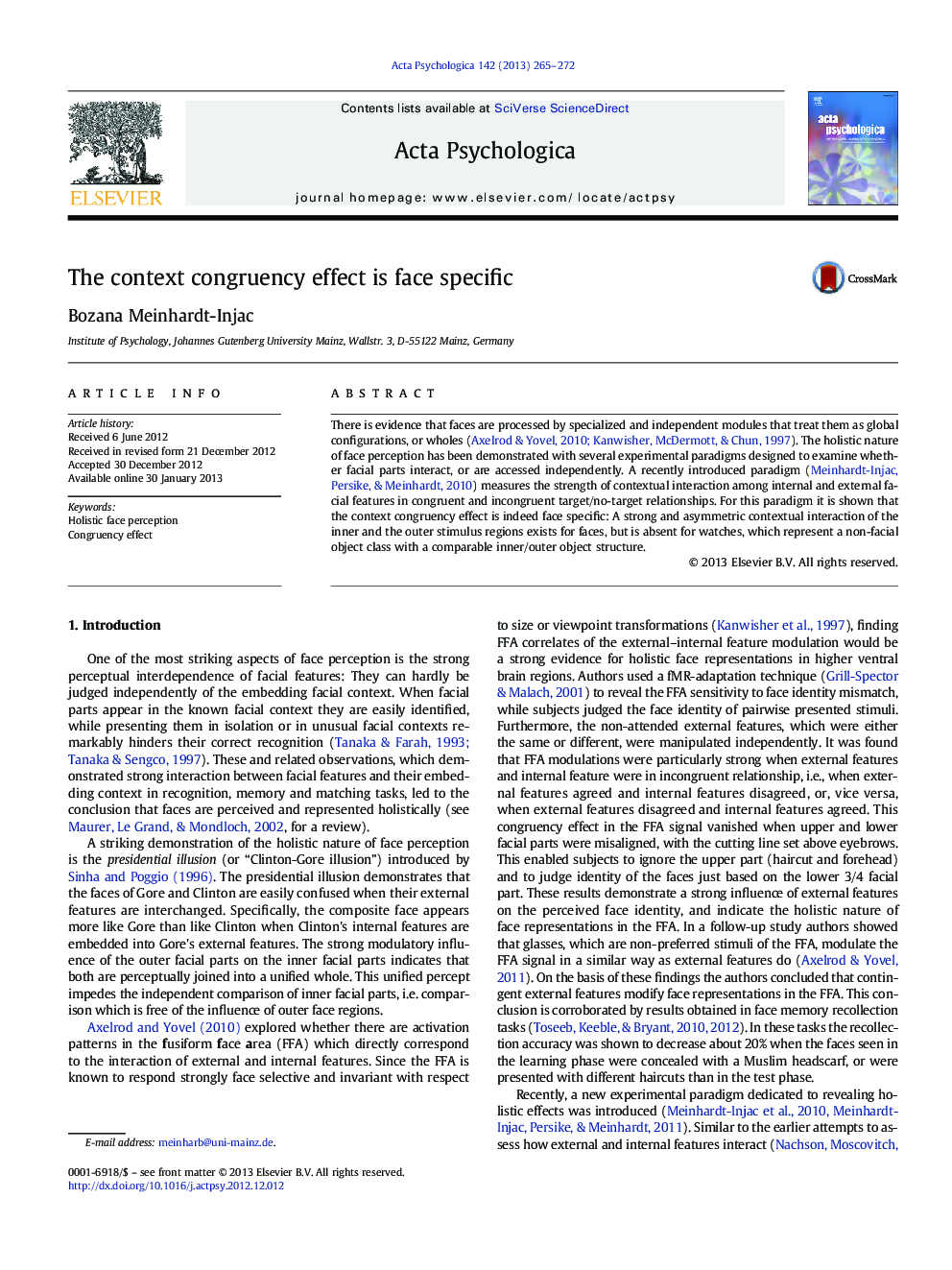| Article ID | Journal | Published Year | Pages | File Type |
|---|---|---|---|---|
| 919890 | Acta Psychologica | 2013 | 8 Pages |
There is evidence that faces are processed by specialized and independent modules that treat them as global configurations, or wholes (Axelrod and Yovel, 2010 and Kanwisher et al., 1997). The holistic nature of face perception has been demonstrated with several experimental paradigms designed to examine whether facial parts interact, or are accessed independently. A recently introduced paradigm (Meinhardt-Injac, Persike, & Meinhardt, 2010) measures the strength of contextual interaction among internal and external facial features in congruent and incongruent target/no-target relationships. For this paradigm it is shown that the context congruency effect is indeed face specific: A strong and asymmetric contextual interaction of the inner and the outer stimulus regions exists for faces, but is absent for watches, which represent a non-facial object class with a comparable inner/outer object structure.
► External and internal facial features show strong asymmetrical contextual interaction. ► Watches show no effects of context and inversion. ► External features are accessed feature-like, but modulate internal facial features.
